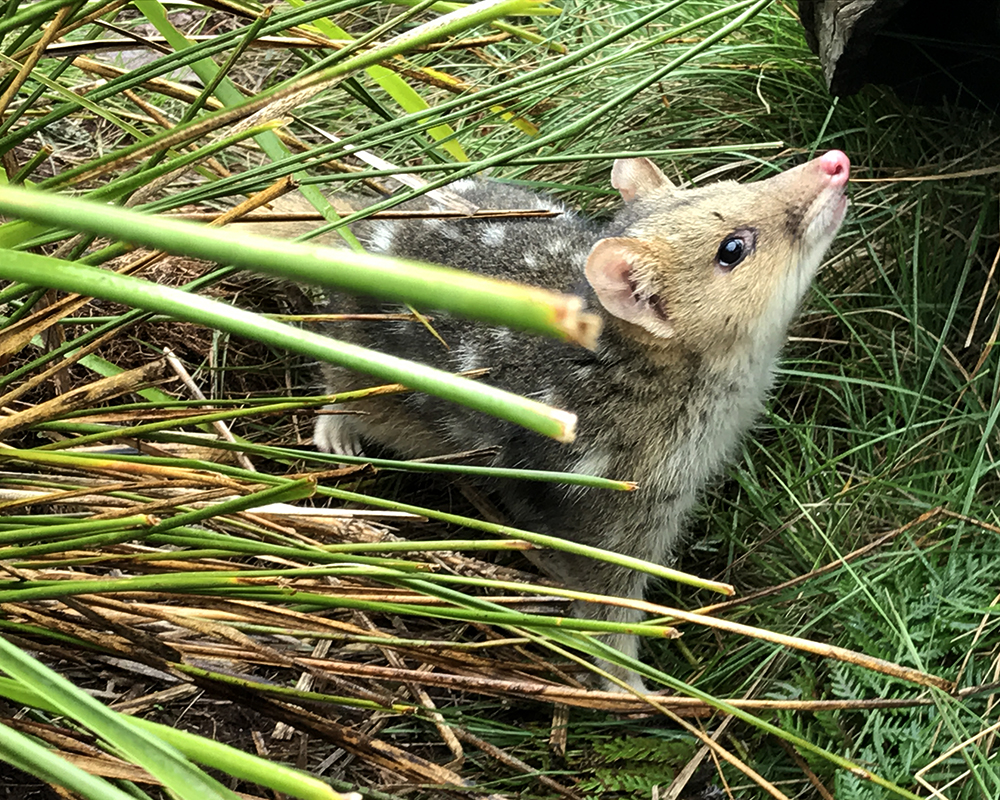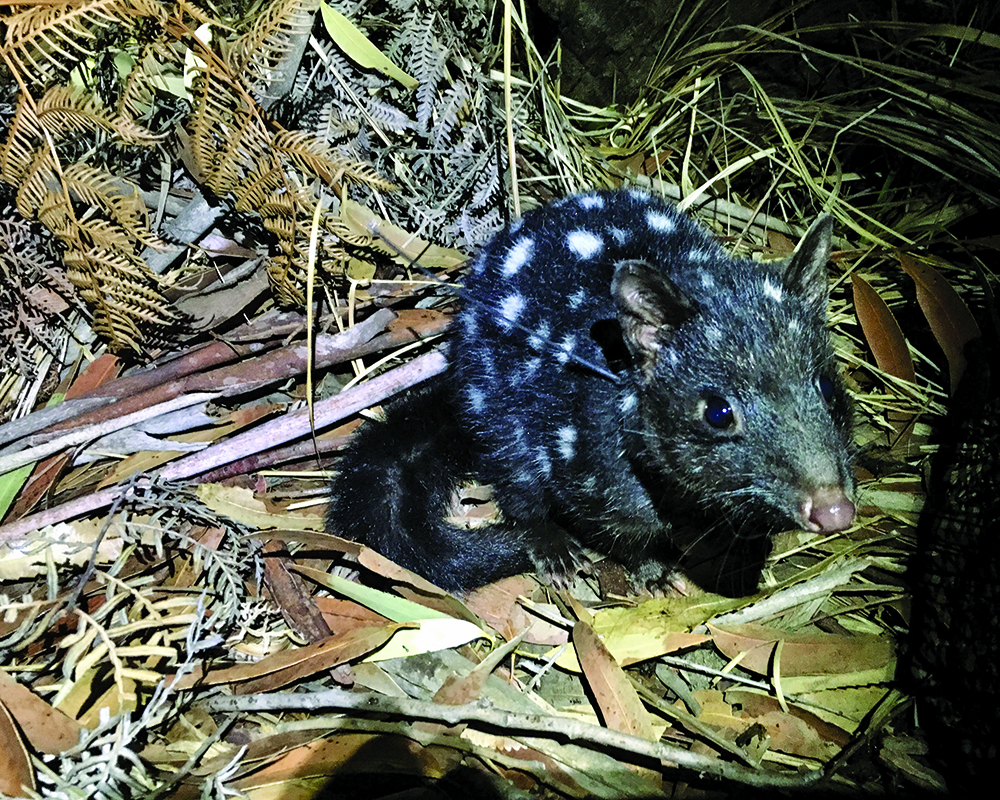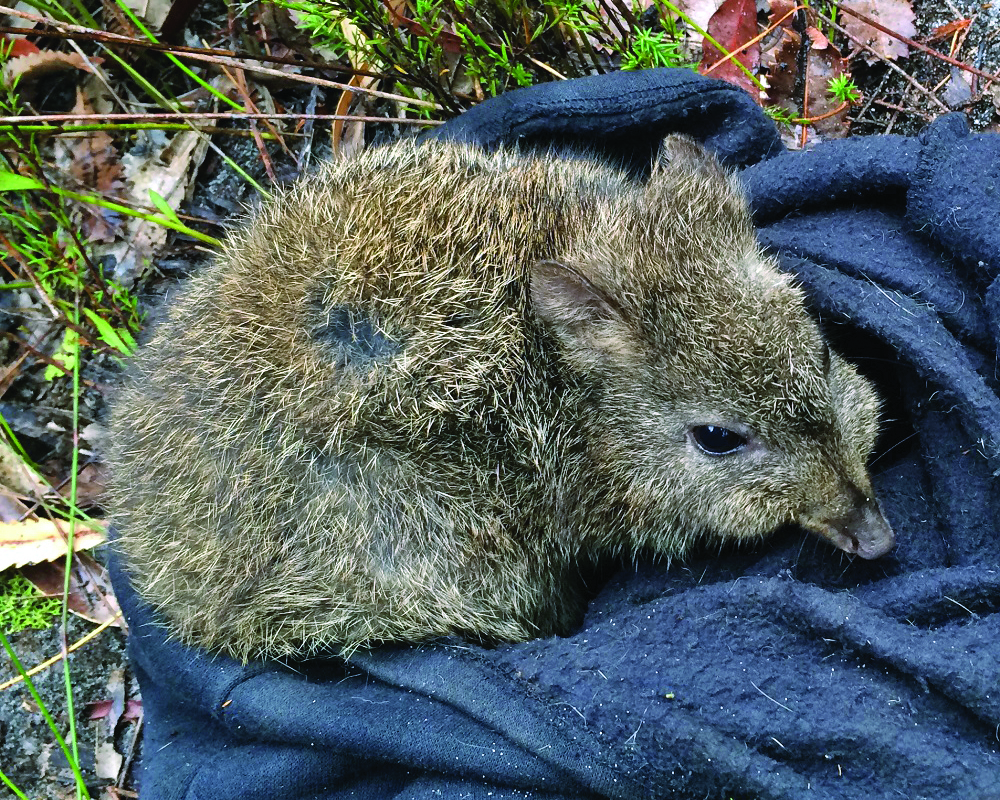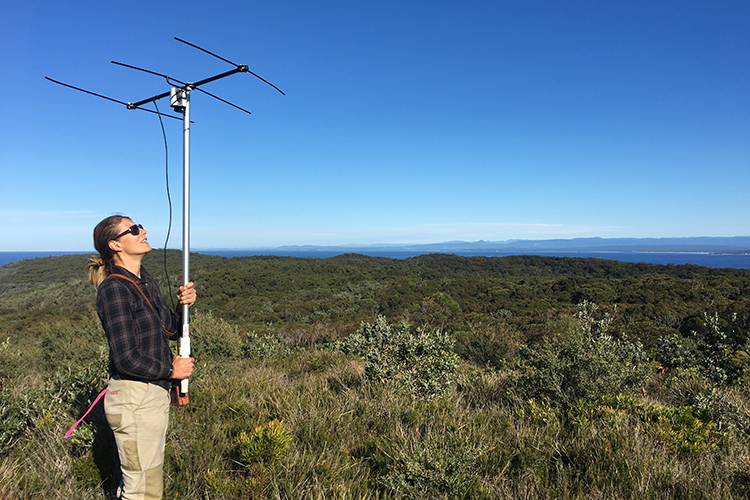
Threatened species returning to Booderee National Park
Monday, 04 September 2017Booderee National Park will be celebrating Threatened Species Day tomorrow (7 September) by welcoming the return of locally extinct mammals.
Long-nosed potoroos and southern brown bandicoots have already been reintroduced to Booderee after being locally extinct for up to a century, and now preparations are underway to welcome a third threatened species back to the park.
The eastern quoll, not seen in the Jervis Bay region since the 1930s, is anticipated to make its return to Booderee next year. 
A long-nosed potoroo at Booderee National Park. Photo: Parks Australia
These inspiring steps toward rebalancing the natural biodiversity of the park were made possible due to the park’s highly successful fox control program.
Booderee National Park Natural Resource Manager Dr Nick Dexter said this was an exciting time for those working on getting these species back to the region.
“It’s extremely rewarding to have the chance to bring these beautiful little native mammals back to Booderee,” Dr Dexter said. “These species were once a common part of this area’s biodiversity before the introduction of feral pests like foxes.
“After years of fox control at Booderee, it’s now possible to reintroduce these threatened species. We’ve reintroduced long-nosed potoroos and southern brown bandicoots and we’ve just been given the go ahead to translocate eastern quolls to the park.” 
A southern brown bandicoot at Booderee National Park. Photo: Parks Australia
It’s hoped the first quoll reintroductions will take place in 2018 with 20 quolls to be released into the park.
Once released scientists from the Threatened Species Recovery Hub of the National Environmental Science Programme, who are already monitoring the reintroduction of potoroos and bandicoots at Booderee National Park, will play a key role in tracking the eastern quolls.
The scientists have been working with park managers to check the ongoing health and breeding of species returning to Booderee.
Australian National University researcher Dr Natasha Robinson, who works in partnership with the Threatened Species Hub, said the monitoring had confirmed that the long-nosed potoroos and southern brown bandicoots translocated to the park in the past two years were healthy and breeding.
“We’ve been working closely with Parks Australia for many years and it’s helped Booderee to become recognised as one of Australia’s best managed and monitored protected areas,” Dr Robinson said.
“It’s also provided key information about where we release these species into Booderee. The radio tracking we did on bandicoots released in 2016 showed they preferred heath and woodland to forested areas so we used that information the following year to release them in their preferred habitats.” 
A researcher releasing a southern brown bandicoot after a health check. Photo: Natasha Robinson
These small-mammal translocations are broad collaborations involving Parks Australia, the Australian National University, Taronga Zoo, Forestry Corporation of NSW, Rewilding Australia, WWF-Australia and the Australian Government’s National Environmental Science Programme.
Booderee National Park is located on the NSW south coast in Jervis Bay. It is jointly managed by the Wreck Bay Aboriginal Community Council and Parks Australia.
Top image: Eastern Quoll. Photo: Rewilding Australia
-

Long-term monitoring at Booderee National Park Reveals valuable insights for park management
Tuesday, 01 September 2020 -

Bundles of quoll joy in Booderee
Monday, 24 September 2018 -

The missing mammals of Booderee
Monday, 24 September 2018 -

Reasons to be cheerful - Conservation success stories from Booderee National Park
Wednesday, 05 June 2019

